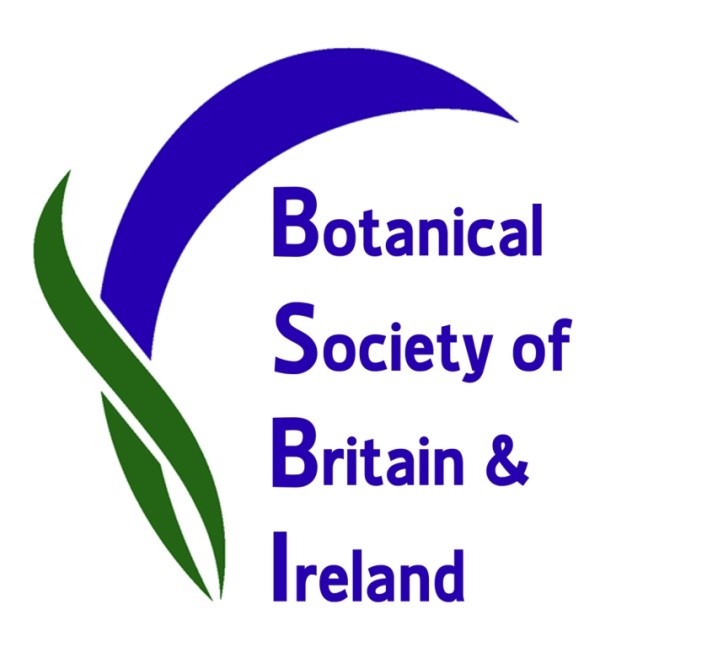Dumfriesshire Botany Group at Moffat, 21st September 2023
Six of us met in the car park by the park in Moffat. There was an early Autumn feel to the day with rain to arrive later. We planned to survey two monads lacking many records. In the morning we explored the civic park and the Hammerlands area and in the afternoon the Moffat Community Nature Reserve.
In the park we were grateful for spending cuts that meant that in some areas nature had been left to get on with it. This does lead to uncertainty about what to record. The Royal Fern Osmunda regalis for example was nearly buried in tall ruderals and bramble but had clearly been planted there. The most interesting area was probably the channel where water is taken in from the river to fill the boating lake. This was wet at one end following recent rain but otherwise had grown a reasonable ruderal flora.
So we saw lots of Sticky Mouse-ear Cerastium glomeratum, Redshank Persicaria maculata, Thale Cress Arabidopsis thaliana and Shepherds purse Capsella bursa-pastoris. There was less of Monkeyflower Erythranthe guttata, Corn Spurrey Spergula arvense and Mugwort Artemisia vulgaris. Mixed in was a non native annual with bright pink flowers. This is the persistent annual Sweet William Catchfly Silene armeria recorded here in 2019. It originates from southern Europe. Scattered on the banks was the common Grey-headed Hawkweed Hieracium trivale.
The boating lakes had little aquatic vegetation so we moved on along the edge of the Birnock Water towards the caravan site. We hoped that the tracks and car parking areas here might have interesting colonists but in fact they were rather disappointing. We did see Winter-cress Barbarea vulgaris but not much else. We walked down through the caravan park to the fishing lakes. Permission was given to walk around these at the café though dogs were not allowed so Ranald had to sit and wait for us. These waters looked initially interesting but are quite intensively managed for fly fishing or coarse fishing. The water is remarkably clear. However most of the aquatic growth was Alternate-leaved Water-milfoil Myriophyllum alternatifolium. A small amount of Broad-leaved Pondweed Potamogeton natans was present and Sarah fished out Small Pondweed Potamogeton berchtoldii.
Having walked back to the cars we drove about a mile south to the Moffat Community Nature Reserve where we had lunch. This has developed on an old gravel quarry site. The big lochan is rather steep sided and well colonised by trees so access to the water is difficult but it did yield a few emergent and aquatic species like Bottle Sedge Carex rostrata, Bulrush Typha latifolia, Spiked Water-milfoil Myriophyllum spicatum and the same two pondweeds seen in the morning.
A small area of neutral grassland by the lochan had a moderately good list of things for this late in the season including Yellow Rattle Rhinanthus minor, Birds-foot Trefoil Lotus corniculatus, Lady’s Bedstraw Galium verum, Glaucous Sedge Carex flacca and Water Avens Geum rivale.
The best area was to the north of this where shallow pools occupy an area of undulating ground that has had some shrubs planted and is being colonised by willows. We could not work out whether any grazing takes place but this might be beneficial. Most of the willows are Sallow Salix cinerea ssp. oleifolia but we saw good young Dark-leaved Willow Salix myrsinifolia. The grassland here had lots of old spikes of Common Toadflax Linaria vulgaris and Marsh orchids Dactylorhiza sp. which were largely past flowering. There was also some Devil’s-bit Scabious Succia pratensis. There was a late flower of Common Spotted-orchid Dactylorhiza fuchsia but there are probably other species here as well for which an earlier visit would be needed. The pools had things like Water-purslane Lythrum portula, Common Spike-rush Eleocharis palustris, Water Horsetail Equisetum fluviatile and Common Sedge Carex nigra.
Just at the top of the site a small area had elements of a developing moss. Species like Marsh Cinquefoil Comarum palustre, Hare’-tail Cottongrass Eriophorum vaginatum, White Sedge Carex canescens and Cranberry Vaccinium oxycoccus were a bit unexpected in an area that must at one time have been stripped of its original vegetation for gravel extraction.
Chris Miles
BSBI county recorder for Dumfriesshire VC73 – see bsbi.org/dumfriesshire

